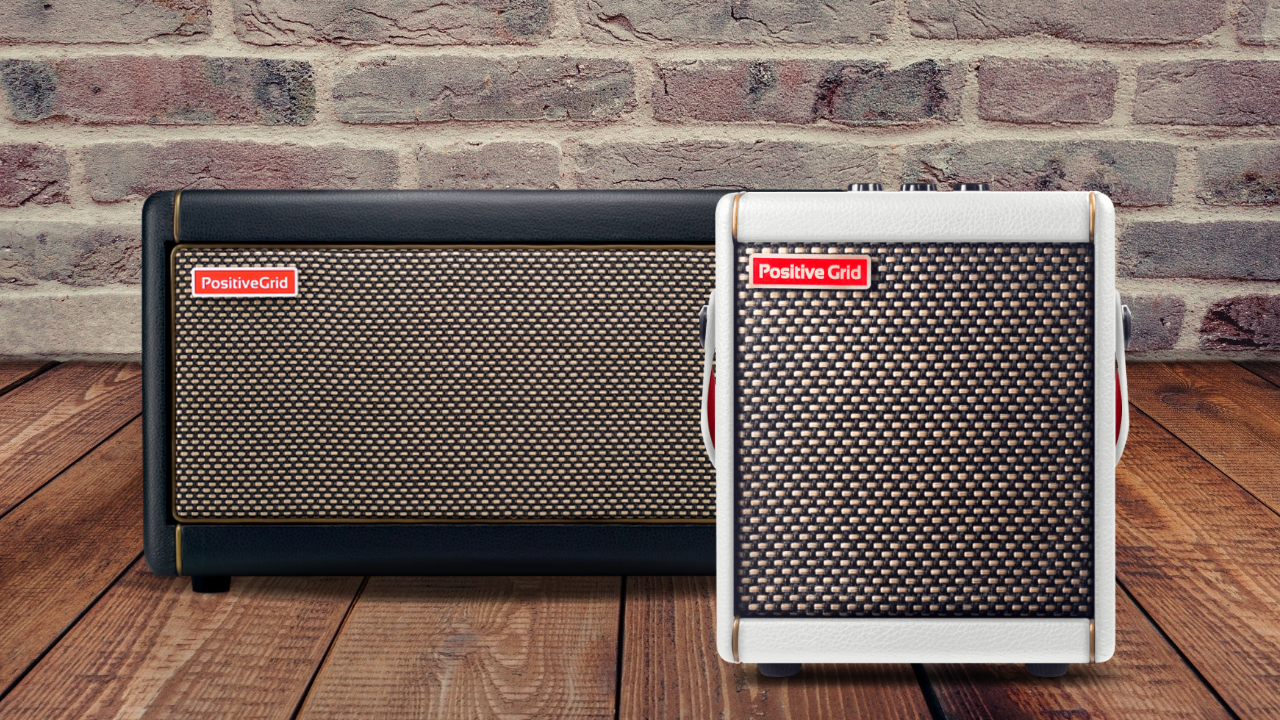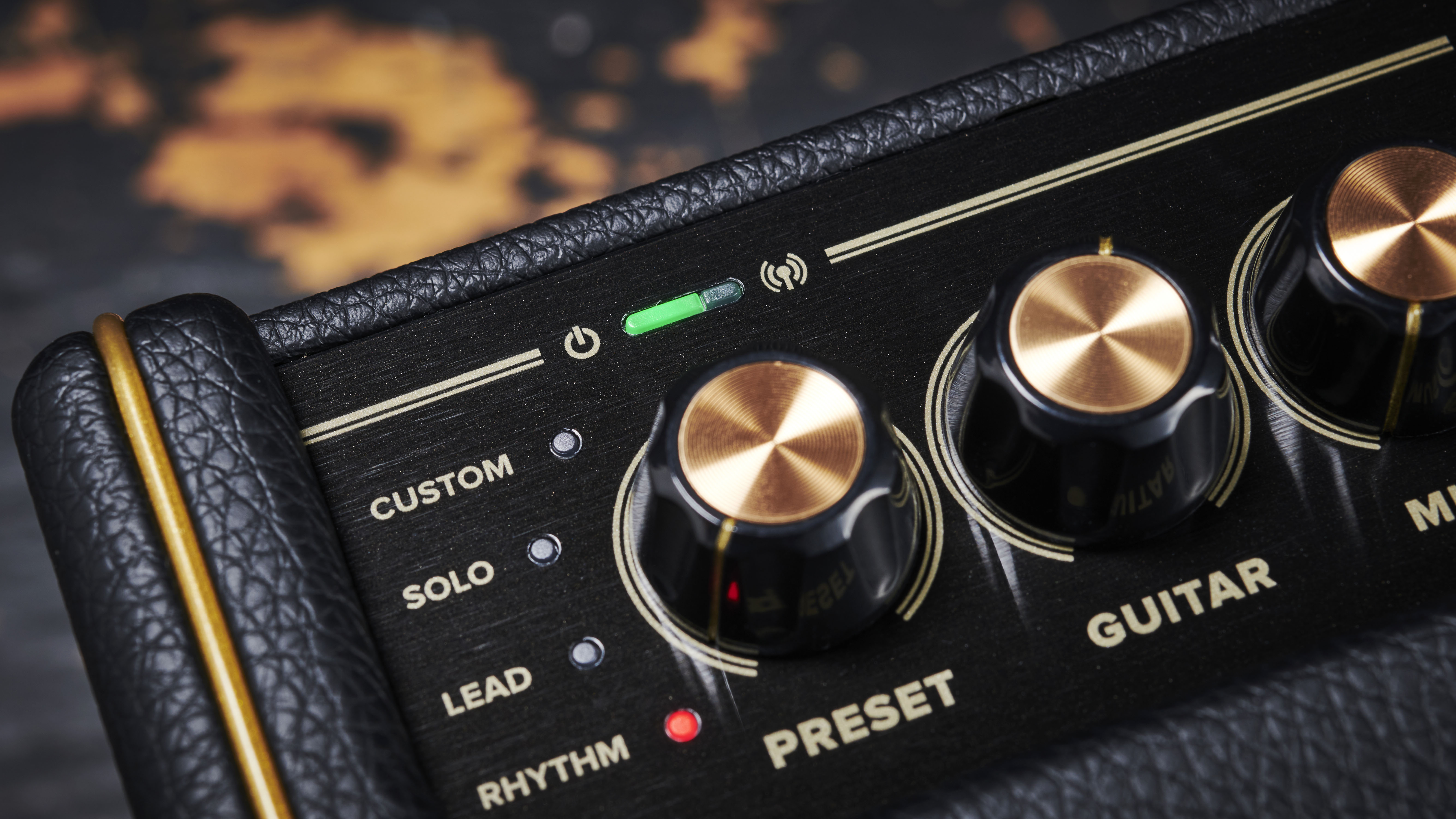Positive Grid Spark vs Spark Mini: Which of these clever practice amps is right for you?
We delve deeper into Positive Grid’s popular practice solutions to see which one you should spend your hard-earned cash on

There are a few amplifiers that deserve to go down in guitar history as true game-changers. The tweed-clad Fender Bassman walked so that the Marshall JTM45 could run, the Peavey 5150's aggressive distortion defined an entire generation of angry players looking to make a statement and the Line 6 Spider brought affordable digital modelling to the masses. Obviously, there are many more amps that pushed the envelope, but this short list proves just how innovative this space can be. The most recent guitar amp pathfinders are Positive Grid, whose pioneering Spark turned the industry on its head when it hit shelves in 2019. Even though this amplifier hasn't been around for long, it most definitely deserves a spot in the guitar amp hall of fame.
Combining unbelievably accurate modelling with seriously clever practice aids, the Spark quickly climbed to the top of the practice amp tree, where it's remained ever since. This smart amp would go on to get a little brother in the form of the Spark Mini a few years later, which continued Positive Grid's winning streak.
So, now that there are two different flavours of this feature-laden practice amp available, you might be wondering if you should go for the original recipe Spark or the new Spark Mini. Well, today, we hope to answer that question by going through the features of both amps and the reasons why you may prefer one over the other.
Positive Grid Spark vs Spark Mini: At a glance

Spark Mini
- Type: Digital modelling combo with an internal rechargeable battery for guitar, bass and acoustic with BIAS Tone Engine and app integration
- Output: 10 watts
- Speakers: 2x2" active stereo with passive radiator
- Controls: Guitar level, Music level, Preset selection
- Sockets: 1/4" guitar input, 1/8" aux input, 1/8" headphone out, Bluetooth audio, USB-C connectivity for recording
- Dimensions: 135mm [w] x 162mm [height including feet] 125mm [d]
- Weight: 1.361 kg
- Read our Positive Grid Spark Mini review
- Buy the Spark Mini at Positive Grid
Spark 40
- Type: Digital modelling combo for guitar, bass and acoustic with BIAS Tone Engine and app integration for jamming
- Output: 40 watts
- Speakers: 2x4" custom-designed
- Controls: Amp Type, Gain, Bass, Mid, Treble, Master, Mod, Delay, Reverb, Output Volume, Music Volume, four programmable Preset buttons, Tap/Tuner button
- Sockets: 1/4" guitar input, 1/8" aux input, 1/8" headphone, Bluetooth audio, USB connectivity for recording 2 In x 2 Out
- Dimensions: 350mm [w] x 180mm [w] 190mm [d]
- Weight: 5.2 kg
- Read our Positive Grid Spark review
- Buy the Spark at Positive Grid
Positive Grid Spark vs Spark Mini: features

Before we can talk about the differences between these amps, we must first talk about what they have in common. Really the Spark 40 and Mini share a heart - or should we say brain? Both amplifiers employ Positive Grid's Bias tone engine and accompanying app to generate their legendary sounds. This award-winning software allows guitarists to access over 10,000 tones and effects, from pristine cleans to gnarly, saturated distortion and everything in between. You also gain access to ToneCloud, an online platform where players can share presets with other musicians from around the world - giving you an almost unlimited palette of sonic colours to paint with.
As well as a myriad of tones, the app also has a few practice aids built-in that are sure to revolutionize your practice routine. Feed the auto-chord feature with any song from Spotify or YouTube, and you'll instantly get the chord changes in real-time. Better yet, you can also slow down the tempo and loop sections of particularly tricky tracks.
The folks over at Positive Grid have used their song learning superpower to inform the new Smart Jam feature, which listens to your playing and automatically generates a backing track with dynamic bass and drum parts - you can even choose the style of drummer your new virtual band has!
Lastly, we have to mention that both the Spark 40 and Mini are very capable recording devices. Located on the rear panel of each unit is a USB output, which turns this practice amp into an audio interface perfect for tracking killer guitar parts at home. Don't worry if you are new to the world of DAWs, you even get a free copy of PreSonus Studio One Prime to help get you started.
Want all the hottest music and gear news, reviews, deals, features and more, direct to your inbox? Sign up here.
Positive Grid Spark vs Spark Mini: differences

Now, obviously, the main difference between the Spark 40 and the Spark Mini is the size, with many changes needing to be made to accommodate the smaller format.
The most significant difference is wattage. While the original Spark pumps out an impressive 40 watts, the Mini is a much more reserved 10 watts. Don't get us wrong, this is still plenty loud for home practice, and it manages to deliver a clear and punchy sound, thanks in part to the new speakers - another change from the Spark 40.
The specially designed dual speakers are angled at 8° to give a natural near-field stereo experience, while the bass port on the underside of the amp delivers a full and rich bass response.
Now, as you'd expect, the shrunken cabinet of the Mini means there is less room for controls on the top of the amp. Where the original Spark has designated dials for amp model, gain, bass, mid, treble, master, modulation, delay, reverb and output, the Mini opts for a simplified layout with only three controls, preset, guitar and music. All the other functions are still available, but they need to be accessed via the accompanying Spark mobile app.
It also has to be mentioned that the Spark Mini is completely battery-powered - although it can be powered using a standard phone charger and USB cable. Whereas the original Spark can only be used with mains power.
Positive Grid Spark vs Spark Mini: which is right for you?

Although these amps share much of the same DNA - they are brothers, after all - each amp does offer its own set of advantages. To decide which is the right amp for your needs, you'll want to ask yourself a few questions to really drill down into what you want out of your new practice buddy.
We believe the most critical question is, do you need the amp to be portable? Now, while the Spark 40 isn't exactly cumbersome, its tiny counterpart is far more portable, and with the added benefit of battery power, it can be played literally anywhere. This makes it a very viable option for those who want a practice amp on the move, playing outside with mates or for those practice spaces that don't have a power outlet handy.
Next, you need to weigh up the space-saving properties of the Mini with the tonal superiority of the Spark 40. Don't get us wrong, both of these amplifiers sound fantastic, but for us, the original Spark has an added weight to the sound - not all that surprising when you consider the extra power and larger speakers. With that in mind, we'd suggest that the tone aficionados opt for the larger Spark. There's a richness and warmth that's somewhat lacking in the Mini when you compare the two side by side.
It's worth noting that Positive Grid are big fans of a sale and routinely run offers on their site with money off deals, free accessories and software bundles.
That said, the sonic difference may not warrant the larger footprint for you - and that's totally fine. For those with limited space, or for those looking for an amp that can discreetly sit on a bookshelf in a living room, the Mini is by far the better choice in those situations.
Lastly, we need to talk briefly about the cost and availability of each amp. While both units won't break the bank, there is a notable difference in the price of each amp. The Mini is currently the cheapest option, coming in at £183/$229, while the standard Spark is around £239/$299. It's worth noting that Positive Grid are big fans of a sale and routinely run offers on their site with money off deals, free accessories and software bundles. Be sure to check out our best Positive Grid Spark deals page for the latest offers.
If you are looking to order a Spark Mini, there is currently a short wait, with orders shipping in July and August. So if you are particularly impatient, then you may want to stump up the extra cash for the standard Spark, which is currently available for delivery in a few days.
If you want to read more about our thoughts on these two incredible amps, then be sure to read our full Positive Grid Spark review and Positive Grid Spark Mini review.
Purchase the Positive Grid Spark and Spark Mini
Both of these amps - along with accessories such as a wireless footswitch, carry bag and headphones - are available to purchase directly from Positive Grid. Click the link above to go straight there and see the latest offers.
Need more help to find your dream guitar amp? Our buyer's guides contain all the information you need
- These are the best budget guitar amps under $500/£500
- The best guitar amps under $/£1,000: top heads and combos
- If money’s no object check out the best high-end guitar amps
- Practice more with the best guitar amp headphones

I'm a Senior Deals Writer at MusicRadar, and I'm responsible for writing and maintaining buyer's guides on the site. As part of my role, I also scour the internet for the best deals I can find on gear and get hands-on with the products for reviews. My gear reviews have been published in prominent publications, including Total Guitar, Guitarist, and Future Music, as well as Guitar World.com. I've also had the privilege of interviewing everyone from Slash to Yungblud, as well as members of Sum 41, Foo Fighters, The Offspring, and many more.
In a previous life, I worked in music retail, selling everything from digital pianos to electric guitars. I'm also a fully qualified sound engineer who holds a first-class Bachelor's degree in Creative Sound Production from the University of Abertay.
